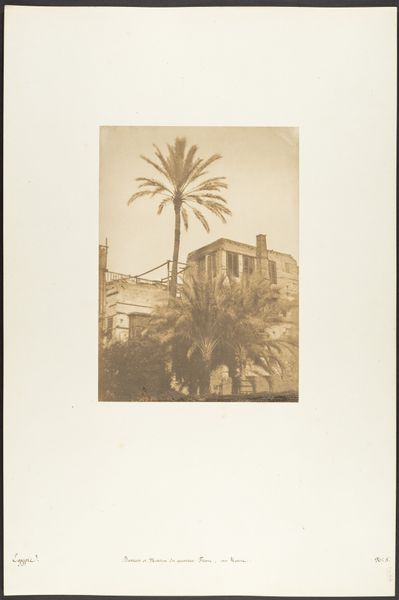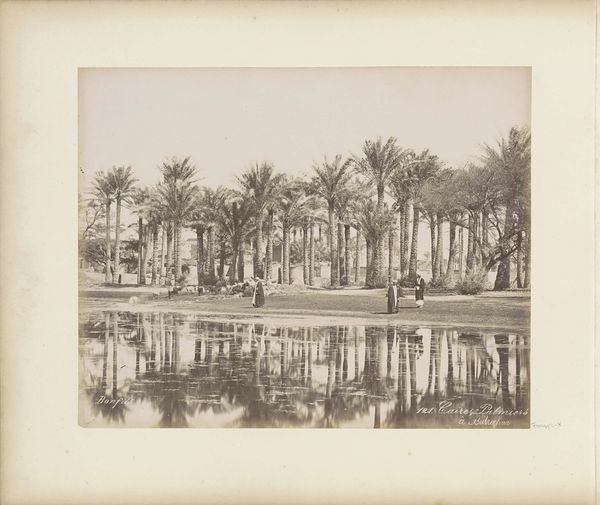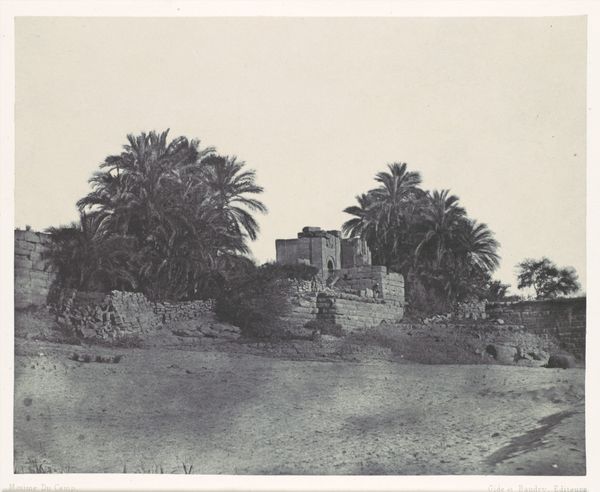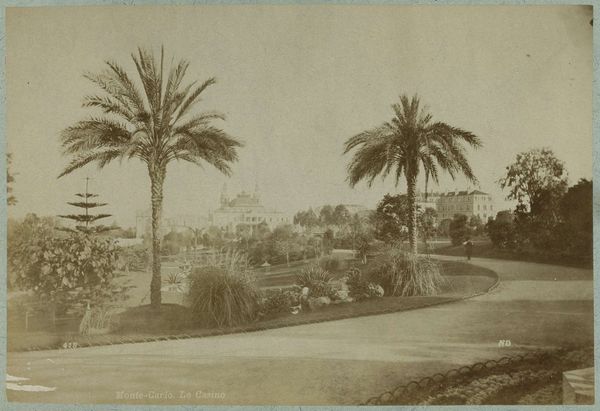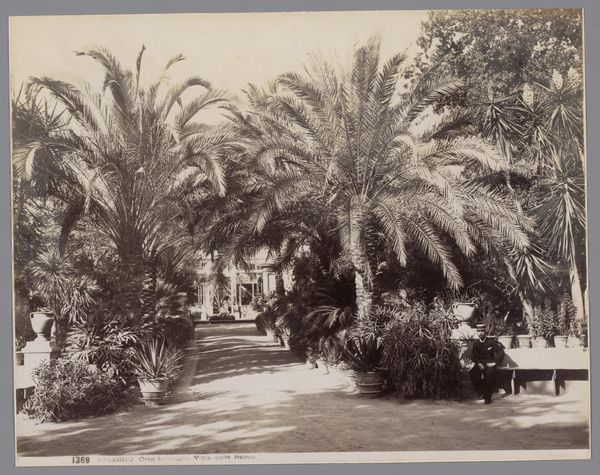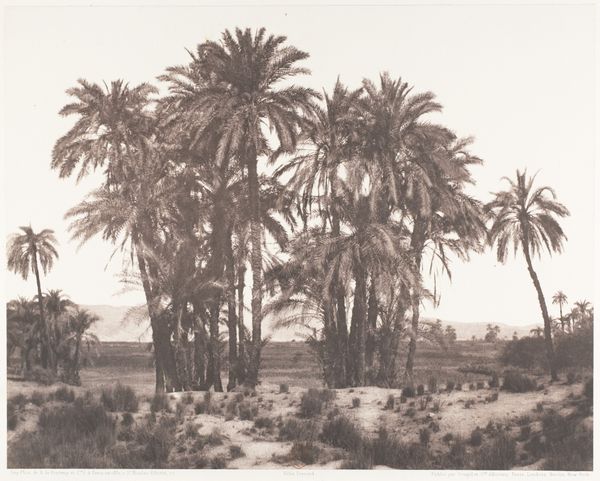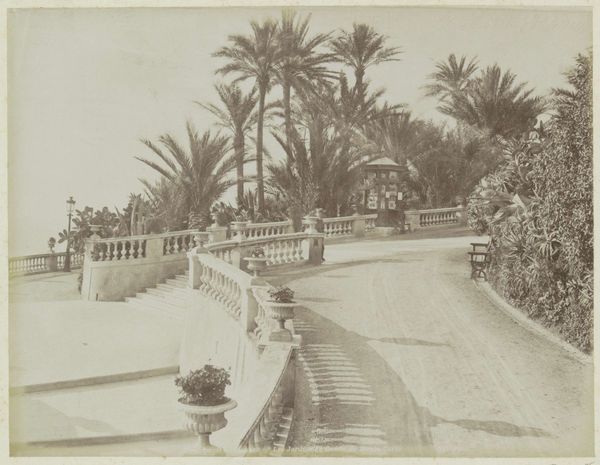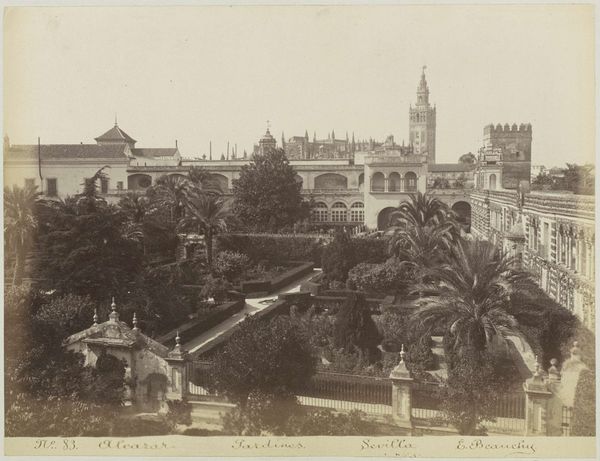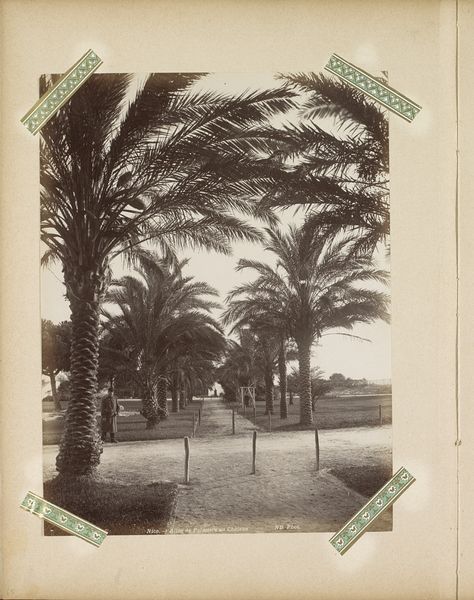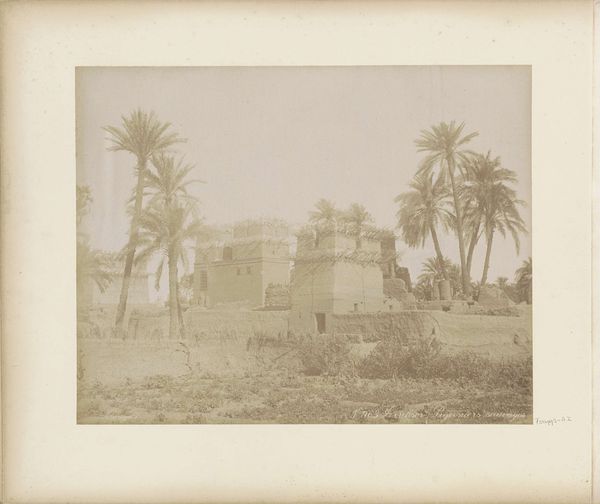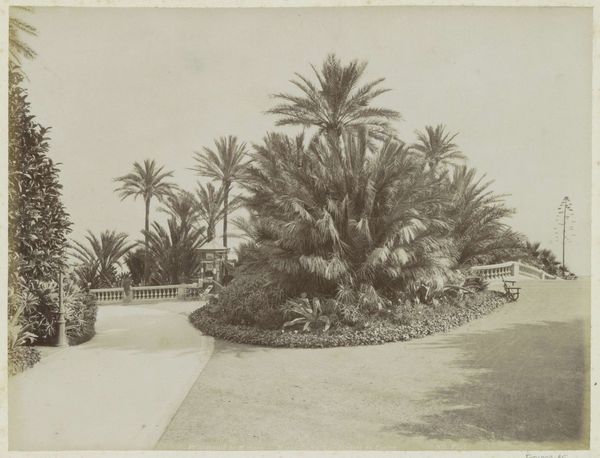
daguerreotype, photography
#
landscape
#
daguerreotype
#
ancient-egyptian-art
#
photography
Dimensions: height 225 mm, width 160 mm
Copyright: Rijks Museum: Open Domain
Curator: Let’s take a moment to look at this daguerreotype, "Palmbomen op het eiland Philae in de Nijl", which translates to “Palm Trees on the Island of Philae in the Nile." Francis Frith created this stunning landscape view before 1859. It really encapsulates early photographic expeditions into Egypt. Editor: Wow, it's dreamy! I immediately feel transported. There's something melancholic and serene about it, the sepia tones give it that old photograph smell, like looking through your grandma's attic, y’know? Curator: I understand what you mean. These early travel photographs have a strong connection to the visual tropes of Orientalism, which of course require careful examination in terms of representation, power, and spectatorship. Here we have Frith framing the Egyptian landscape with what may appear to be a pristine aesthetic. However, it also inadvertently showcases the complexities of colonial encounters and cultural interpretation. Editor: Mmm, I can also see the historical context. It’s not just a picture of pretty palm trees, is it? I’m trying to think beyond the obvious, imagine the physical work involved! Setting up cameras in the desert sun back then, hauling all the equipment, and dealing with those finicky chemical processes! Curator: Exactly! It serves as an artifact that links technology, visual culture, and imperial ambition. We can critically consider how photography at that time served both documentary and ideological purposes. Images such as these entered the visual culture and further shaped Western perception and the understanding of non-Western worlds. Editor: Yeah. There’s so much history simmering beneath that placid surface. Makes you wonder, what were Frith’s intentions? I find myself gazing into that washed-out sky and imagining all the people who lived their lives right there in that moment, completely unaware of having their landscape memorialized. Curator: Well, that kind of multilayered consideration of context is key to a complete understanding. Photography certainly shaped knowledge of these far-off lands for the folks back home. Editor: Absolutely. Looking at it again, I’m reminded that nothing is ever quite as straightforward as it appears to be at first glance. And as a photo, the tonal range seems otherworldly to me—the longer I look at this work, the more enigmatic it seems.
Comments
No comments
Be the first to comment and join the conversation on the ultimate creative platform.
